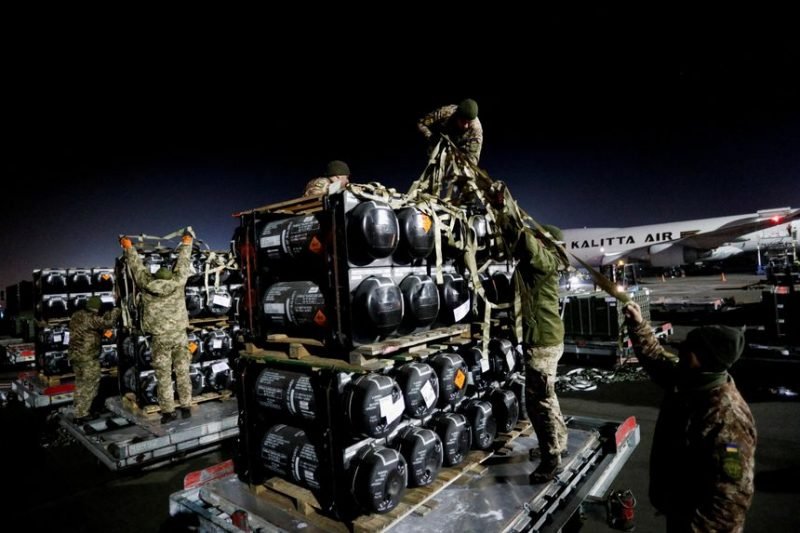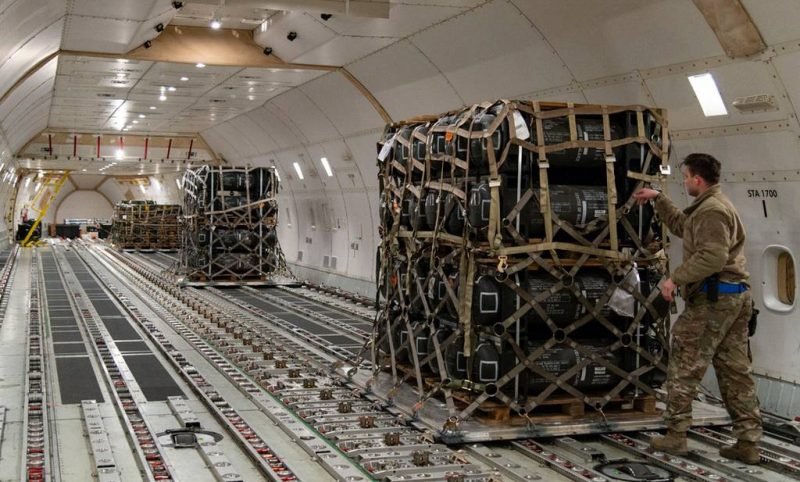America’s Dangerous Track Record Arms Supplies To Ukraine

The ongoing war in Ukraine should provoke discussion about Washington’s policy of exporting vast quantities of weapons to East Europe. Notwithstanding their limited financial resources, the US is pushing Eastern European countries to upgrade their armed forces either by purchasing weapons from the US or from its NATO allies. Since fighting began in the Donbas and Crimea in 2014, weapons have been pouring into Ukraine from the NATO states. Donald Trump’s administration approved the largest US commercial sale of lethal defensive weapons to Ukraine since 2014. The omnibus included about $620.7 million in aid for Ukraine, including $420.7 million in State Department and foreign operations funds and $200 million in Pentagon funds.
Despite the 1976 Arms Export Control Act which created the framework to cancel arms deals, the US Congress, which has the authority, has not impeded a deal in the last four and a half decades. And since the 9/11 terror attacks, the pace of American sales of weapons has increased. From 2002 to 2016, the United States has sold roughly $197 billion worth of weapons and related military support to 167 countries.
On 19 January 2022, before the current phase of the Russian invasion began, the US State Department had declared that it would allow NATO countries Lithuania, Latvia and Estonia to send US-made missiles and other weapons to Kyiv. The third-party transfer agreements will allow Estonia to transfer Javelin anti-tank missiles to Ukraine, while Lithuania will be permitted to send Stinger missiles. The UK has gifted over two thousand anti-tank missile launchers to Ukraine. Turkish Bayraktar TB2 drones have already made their way into Ukrainian arsenals. Canada has sent a special operations unit for training and has not ruled out sending defensive weapons.
The German government which had refused to supply Ukraine with any defensive weapons, claiming this could lead to the breakdown of a preferable diplomatic process, reversed its historic policy of never sending weapons to the conflict zone. It will now be sending 1,000 anti-tank weapons and 500 Stinger anti-aircraft defense systems to Ukraine. The government has also authorized the Netherlands to send Ukraine 400 rocket-propelled grenade launchers and told Estonia it will ship over nine howitzers. after this paradigm shift in Germany’s defense policy, the EU is trying to activate a process called ‘European Peace Facility,’ which allows it to provide military aid up to a ceiling of €5 billion, because EU treaties do not allow it to tap into its normal budget for military purposes. Additionally, US Secretary of State Antony Blinken has announced that the US is offering $350 million worth of “lethal defensive” weapons to Ukraine. That brings the total of US military aid to Ukraine to $1 billion over the past year and to more than $2.5 billion since 2014.

Supplying deadly weapons to Ukraine will backfire:
The US has been training the right wing neo-Nazi Ukrainian militias members which form the Azov Battalion since 2014, near the city of Lviv in western Ukraine. The ultranationalist regiment has been integrated into the National Guard of Ukraine (NGU) , backed by Ukraine’s Ministry of Internal Affairs. Andriy Biletsky, who pulled together the neo-Nazi groups creating the Azov Battalion is now a member of Ukraine’s parliament. American supply of weapons and training to ultranationalist right wing groups is reminiscent of American actions in Afghanistan where they supplied similar resources to the mujahideen. This interference in the country’s internal defence structure is a sure gamble with the future of the Ukrainian people. Such poor choices may haunt the US after the current phase of escalated violence in Ukraine is over, just as it did in Afghanistan, from where the US departed after decades of poor choices. when there is no war left to fight, where these U.S.-trained neo-nazi affliated warriors will go and what they will do is something that the West must consider before supplying Ukraine with massive cache of arms. The neo nazi militias which are fighting as part of NGU could turn on the minority groups in the country like Jews.
The sudden influx of such large quantities of weapons into Ukraine, increases the likelihood of their criminal diversion. Most of the weapons in the black market can be traced to the previous conflict in Ukraine. After 2014 when the Trump administration approved commercial sale of lethal defensive weapons to Ukraine, arms and ammunition worth €1.2bn were routed to Middle Eastern countries, fuelling the unrest in Syria and Yemen. According to an investigative report by the Organised Crime and Corruption Reporting Project (OCCRP) “Since the outbreak of war in Syria, weapons from Central and Eastern Europe have flooded the conflict zone through two distinct pipelines – one sponsored by Saudi Arabia and coordinated by the CIA, and the other funded and directed by the Pentagon.” Eastern Bloc weapons and ammunition were transported from Black Sea ports to the military ports of Aqaba, Jordan, and Agalar, Turkey through cargo ships commissioned by the Pentagon’s Special Operations Command (SOCOM). The 2,750 tonnes of ammonium nitrate which exploded in the port of Beirut on August 4 2020, can in fact be traced to a network of arms dealers and shell companies controlled by Ukrainians.
According to the Small Arms Survey, there are roughly 1.2 million legal firearms in Ukraine – and around 4 million illegal weapons, many of them fully-automatic military weapons. Ukraine is believed to have one the biggest arms trafficking markets in Europe. Many of the arms now in the control of non-state groups in Ukraine fall into the hands of organised crime groups selling arms to the Middle East often through Odessa. These weapons include everything from fully automatic military rifles to RPGs. In 2019 Ukrainian soldiers attempted to sell a collection of weapons including 15 RPG 22 rockets for just $2900. in 2020 a member of the Ukrainian armed forces in Odessa sold several items including grenades and anti tank mines. This situation may develop into a repeat of the 1980s when US weapons given to Afghan Mujahideen turned on the black market in Pakistan.
The war in Ukraine may also become a theatre to showcase the latest weaponry in the global arms market. For instance Turkey is scouting buyers for its STM 500 mini attack submarines, which it has deployed in the Black sea to display its efficiency in counterbalancing Russia. The US may not have to push hard for its $6 billion Abrams tanks sale to Poland.
After disastrous results in nearly all its military involvements the US must examine the significant risks involved in weapons transfers. The negative consequences of American arms sales to conflict zones outweigh any security or economic benefits they produce. In the case of Ukraine too, the possibility is that weapons will lead to unpredictable consequences ending up in the hands of contingent users.
__________________________________________________________________


















